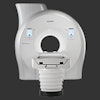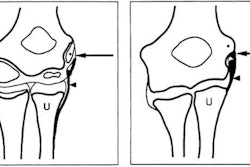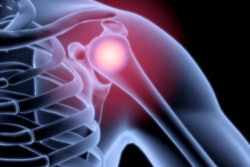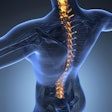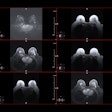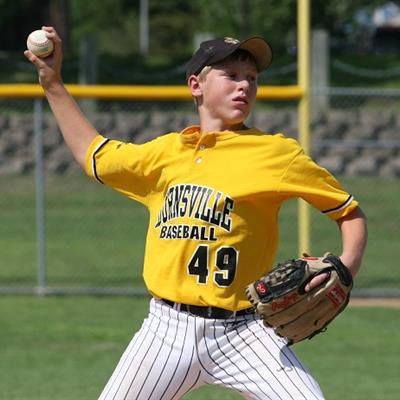
Patient age and findings on MRI can be helpful in determining how soon baseball players might return to action after an elbow injury, according to research presented at the American Orthopaedic Society for Sports Medicine (AOSSM) annual meeting in Boston last weekend.
The researchers did not find statistically significant differences in return to throwing, return to pitching, and the need for ulnar collateral ligament (UCL) repair based on the location and grade of the injury on MRI. They did, however, conclude that younger players with low-grade injuries on the humeral side of the elbow had a better chance of returning to action sooner than their older counterparts and had less risk of eventually having to undergo UCL surgery.
"Based on this study, nonoperative treatment of ulnar collateral ligament injuries will likely be more successful in younger players, lower grade tears, and humeral-sided injuries," said lead author and study presenter Dr. Aakash Chauhan of DuPage Medical Group in Downers Grove, IL, in a statement.
In an effort to evaluate the prognostic relationship of MRI injury grade and tear location with outcomes for nonoperatively treated elbow UCL tears in professional baseball players, the researchers worked from a pool of 544 professional baseball players (mean age, 22.5 years) from the Major League Baseball Health and Injury Tracking System (HITS). The subjects, 457 (84%) of whom were pitchers, were treated nonoperatively for UCL ligament injuries between 2011 and 2015.
An independent musculoskeletal radiologist reviewed a total of 237 available MRI scans and recorded the location of the tears -- on the humeral side, the ulnar side, or on both sides of the elbow. The reader also assessed the severity of damage based on three levels:
- Grade I indicated an edema.
- Grade II indicated a partial tear.
- Grade III was a complete tear.
The majority of tears were on the humeral side of the elbow (65%), compared with the ulnar side (13%) or both sides (22%). The researchers also reviewed players' demographic information, such as age and level of competition; outcomes in terms of throwing again and/or returning to playing; and whether their initial decision not to undergo surgery to treat their condition later resulted in UCL reconstruction.
Most significantly, players older than 25 years were three times more likely not to return to action if they chose not to surgically treat their injured elbow, compared with players younger than 25 (p = 0.044) who took the same curative option. In addition, major league baseball players were six times more likely to reinjure their elbows or face UCL reconstruction if they initially chose the nonoperative route (p = 0.012) than minor league baseball players.
Interestingly, baseball players with an injury on the ulnar side of the elbow (58%) and tears on both sides (60%) were more likely to undergo UCL reconstruction, compared with athletes who had tears on the humeral side of the elbow (51%). The difference, however, did not reach statistical significance (p = 0.441).
Players with tears on the ulnar side of the elbow also had the lowest return to throwing (81%) and return to playing (42%) than players with injuries on the humeral side, but the numbers showed only a trend and were not statistically significant. Similarly, lower grades of elbow injury were also associated with a higher return to throwing, higher return to play, and lower ulnar collateral reconstruction, compared with higher-grade injuries, but this association did not reach statistical significance.

